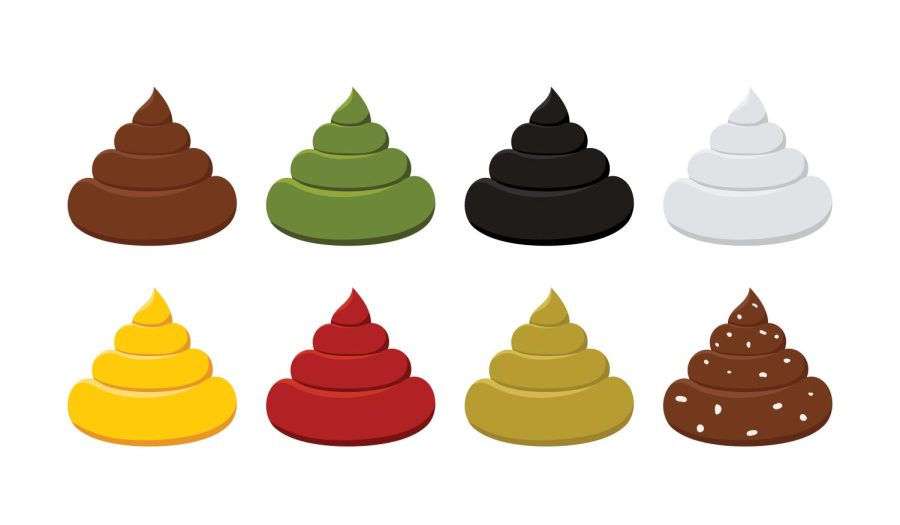Guest Opinion | The Doctor is in: Alarming stool colors do not have to be scary
Despite the taboo of talking about your bowel movements, communication and awareness of normal and abnormal stool colors are important to disclose to your healthcare provider.
September 6, 2022
Everybody poops. Typically, people poop three times a day to three times a week, with a characteristic brown to dark green hue. However, when our stool color changes abruptly or slowly over time, it can be both alarming and confusing. This article briefly covers several hues of poop across the color spectrum and is meant to inform you of when it might be time to seek an opinion from a healthcare professional.
- Normal — Brown/Green:
Stool color is heavily affected by our diets, but it gets its characteristic brown shade from bile acids. These are green-colored chemicals produced and released by the liver to digest fats. As they move through our gut, enzymes turn them into a brown hue. Greener stools can also be normal and can indicate a faster transit time through the gastrointestinal system, which is caused by diarrhea or consuming hefty servings of leafy vegetables.
- White:
White stools are associated with the consumption of high doses of certain anti-diarrheal medications but can also indicate a lack of bile in your GI system. This could be related to issues with your pancreas or liver. If this persists or accompanies other symptoms like fatigue, fevers, or skin yellowing, talk to a healthcare provider.
- Yellow:
Yellow stools can be seen with servings of carrots, yams, or turmeric. However, if they are consistently yellow, greasy, foul-smelling, and/or floating in the toilet bowl, it may be a sign of excess fat in the poop. This can be caused by disorders of absorption in the digestive tract or problems with the pancreas not releasing digestive enzymes. It is important to see a doctor if this persists, as this could lead to nutrient deficiencies in the future.
- Red:
Red stools may be the most alarming. Diets high in beets, artificial red/orange coloring (i.e. hot Cheetos/Takis), cranberries, or tomato juice can be the culprit, however, it can sometimes be a sign of bleeding in the lower GI tract (duodenum-anus). Commonly, small amounts of red blood are associated with hemorrhoids, which are dilated veins near the rectum that can bleed when stool passes. These can be painful or if they are high up in the rectum, painless. This can be treated by over-the-counter ointments, but a healthcare provider may also be able to help. If bleeding persists and is associated with nausea, dizziness, or fevers, see a healthcare provider ASAP.
- Black:
Black stools can be caused by diets high in black licorice or medicines like iron supplements and Pepto-Bismol. Black stools can also be formed by blood in your upper GI tract (mouth to duodenum), which is digested and blackened as it moves through your intestines. Black stools should always be investigated, and if present with other symptoms like nausea, abdominal pain, or dizziness, should require prompt presentation to an urgent care or emergency room.
In sum, our stool is often affected by what we eat but can occasionally be a sign of an underlying health issue. Vigilance, understanding, and a willingness to share this important information with your healthcare provider are the most important steps for knowing if your poop is normal or worth a closer look.
- Samuel Choice, 3rd Year Medical Student, Carver College of Medicine, Class of 2024
Columns reflect the opinions of the authors and are not necessarily those of the Editorial Board, The Daily Iowan, or other organizations in which the author may be involved.



